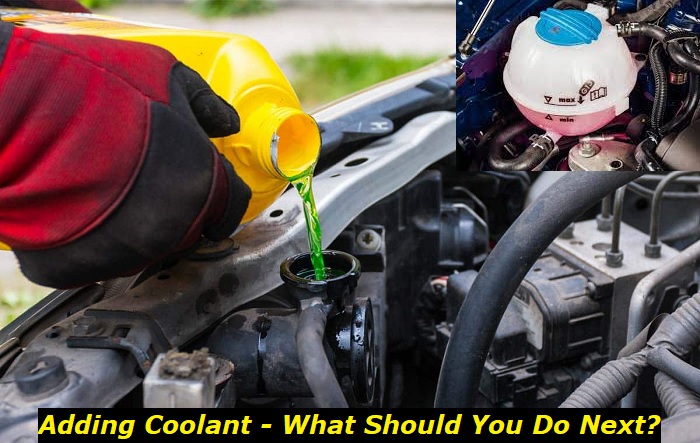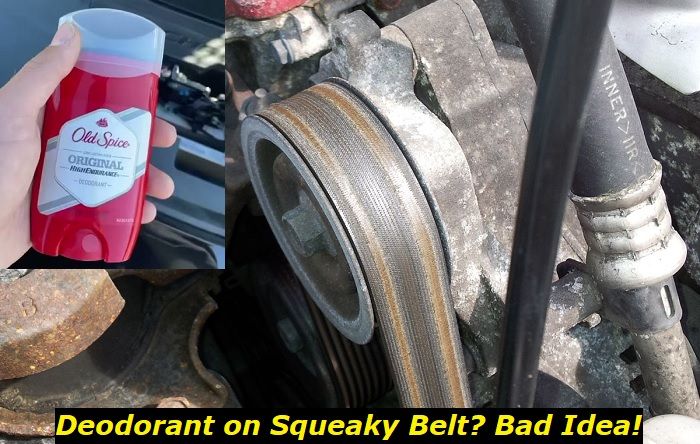Adding coolant to your car is an important part of maintaining the engine's temperature and preventing it from overheating.
Cooling system problems highlights
- Level of urgency: high
- Common reasons: bad antifreeze, broken cooling equipment, leaks
- DIY diagnostics: very complicated
- DIY repair: impossible
- Price of repair: $250 - $650
- Time for repair: 3 - 8 hours
- If ignored: engine overheating and failure

1. Tighten the radiator cap
When you add coolant to your car, you're taking an important step in maintaining your engine's health. But did you know that there's a crucial next step that a lot of people forget? That's right, we're talking about tightening the radiator cap!
Now, we know what you might be thinking - a tiny cap can't possibly make that big of a difference, right? Wrong! The radiator cap is like the MVP of your car's cooling system, keeping the pressure just right to prevent your engine from overheating and breaking down. But if the cap is damaged or loose, you might as well be driving a ticking time bomb.
Tightening the radiator cap is easy-peasy, but it can make all the difference in keeping your engine running smoothly. First, make sure the engine is cool to the touch, so you don't burn your fingers. Then, find the radiator cap on the top of the radiator (it might be a twist-off or push-and-turn design). Carefully remove the cap and check for any damage, like cracks or leaks. If everything looks good, go ahead and put the cap back, making sure not to over-tighten it.
By tightening the radiator cap after adding coolant, you're not only preventing potential problems down the road, but you're also showing your car some love. And let's face it, who doesn't want to take care of their trusty ride? So next time you add coolant, don't forget to give your radiator cap some attention too. Your engine will thank you!
2. Check the coolant level
Alright, gearheads, you've added the coolant, tightened up the radiator cap, and given your car some TLC. But there's one more step to go - checking the coolant level. Why is this so important, you ask? Well, the coolant level tells you how much fluid is circulating through your engine, which is kind of a big deal.
To check the coolant level, start by locating the coolant reservoir tank. It's usually a clear plastic tank that's separate from the radiator and has a "max" and "min" level marked on it. Make sure your engine is cool, then remove the reservoir cap (if your car has one) and check the level against the marks. If the coolant level is too low, you'll need to add more coolant. But don't overdo it! Adding too much coolant can cause overflow and a whole host of other issues.
If you find that the coolant level is low, you might be wondering why. It could be due to a leak, a cracked radiator, or just normal wear and tear. Whatever the reason, it's important to address it as soon as possible to avoid any further damage to your engine.
So, fellow car enthusiasts, don't forget to check your coolant level after adding new coolant. It only takes a few minutes, and it can save you a whole lot of trouble in the long run. Plus, you'll look like a pro at your next oil change appointment.
3. Start the engine
Alright, you've added the coolant, checked the coolant level, and given your car some much-needed attention. Now, it's time to fire up that engine! But wait, why do we need to do that, you ask? Well, starting the engine is an essential step in ensuring that the coolant is distributed evenly throughout the engine.
When you start the engine, it kickstarts the cooling system and helps to circulate the coolant to all the nooks and crannies of your engine. This ensures that every part of your engine is getting the necessary cooling it needs to function properly. Plus, it gives you a chance to listen for any strange noises or look for leaks, which could be a sign of a bigger issue.
So, once you've added the coolant and checked the level, go ahead and start that engine. Let it run for a few minutes, giving the coolant a chance to do its job. Keep an eye out for any warning lights on your dashboard, and listen for any unusual sounds coming from under the hood. If everything looks good, you're good to go! And if not, it might be time to call up your trusted mechanic.
By starting your engine and letting it run after adding coolant, you're taking an important step in maintaining your car's health. So next time you top off your coolant, don't forget to give your engine a little love by starting it up. Your car will thank you, and you'll feel like a certified car expert.
4. Check for leaks
You've done the hard work of adding coolant, checking the level, and starting the engine. Now, it's time for the fun part - checking for leaks! Okay, maybe it's not the most exciting thing you've ever done, but trust us, it's crucial.
Think of it like a medical check-up for your car. You want to make sure your car is healthy and free of any pesky leaks. If left unchecked, a coolant leak can cause your engine to overheat, and nobody wants to deal with a smoking hot engine. So, let's get to it!
With the engine running, take a good look under the hood and keep an eye out for any signs of a leak. If you see a puddle of green or yellow fluid on the ground, that's a clear indicator that something's not right. Don't panic, though - just turn off the engine and investigate where the leak is coming from.
Now, if you're a DIY type of person, you might be able to fix the leak yourself. It could be as simple as tightening a loose clamp or replacing a cracked hose. But if you're not confident in your abilities, don't hesitate to take your car to a mechanic. They'll be able to diagnose the problem and get your car running smoothly in no time.
Remember, a coolant leak might seem like a small issue, but it can lead to big problems down the line. So, don't ignore it! By taking the time to check for leaks, you're investing in the long-term health of your car.
5. Test the temperature gauge
You've added the coolant, checked the level, started the engine, and checked for leaks - good job! But, before you hit the road, there's one more thing you need to do: test the temperature gauge.
Think of the temperature gauge as the thermometer for your car. It lets you know if your car is running at a healthy temperature or if it's starting to overheat. Trust us, you don't want your car to feel like it has a fever.
So, while the engine is running, take a look at the temperature gauge on your dashboard. It should show that the engine is running at a safe temperature - typically somewhere in the middle of the gauge. If the gauge shows that the engine is getting too hot, like it's creeping up toward the red zone, that's a sign that something is not right.
Don't ignore it! Turn off the engine immediately and investigate the cause. It could be something as simple as a faulty temperature sensor or something more serious like a failing water pump. If you're not sure what's causing the issue, it's best to take your car to a mechanic to have it checked out.
Remember, a healthy temperature gauge means a healthy car. By taking a few minutes to test the temperature gauge, you're ensuring that your car stays in top condition and avoids costly repairs down the line. So, take the time to give your car a quick temperature check before you hit the road. Your car will thank you for it!
Final words
You now know the steps to take after adding coolant to your car like a true pro! Your car will be running like a well-oiled machine in no time. But don't stop there! By following these steps, you're not only ensuring a smooth ride but also protecting your car from costly damages.
Always remember to check the coolant level, start the engine, check for leaks, and test the temperature gauge. It only takes a few minutes, but it can save you from major headaches in the long run. It's like the saying goes: "an ounce of prevention is worth a pound of cure."
Think of your car as your best friend. It takes you places, keeps you company, and is always there for you when you need it. And just like a good friend, your car deserves a little TLC. By following these simple steps, you're showing your car that you care and it will return the favor with a long, happy life on the road.
So the next time you add coolant to your car, make sure to follow these important steps. Your car will thank you for it, and you'll be cruising down the road with peace of mind.
About the authors
The CarAraC research team is composed of seasoned auto mechanics and automotive industry professionals, including individuals with advanced degrees and certifications in their field. Our team members boast prestigious credentials, reflecting their extensive knowledge and skills. These qualifications include: IMI: Institute of the Motor Industry, ASE-Certified Master Automobile Technicians; Coventry University, Graduate of MA in Automotive Journalism; Politecnico di Torino, Italy, MS Automotive Engineering; Ss. Cyril and Methodius University in Skopje, Mechanical University in Skopje; TOC Automotive College; DHA Suffa University, Department of Mechanical Engineering





Add comment